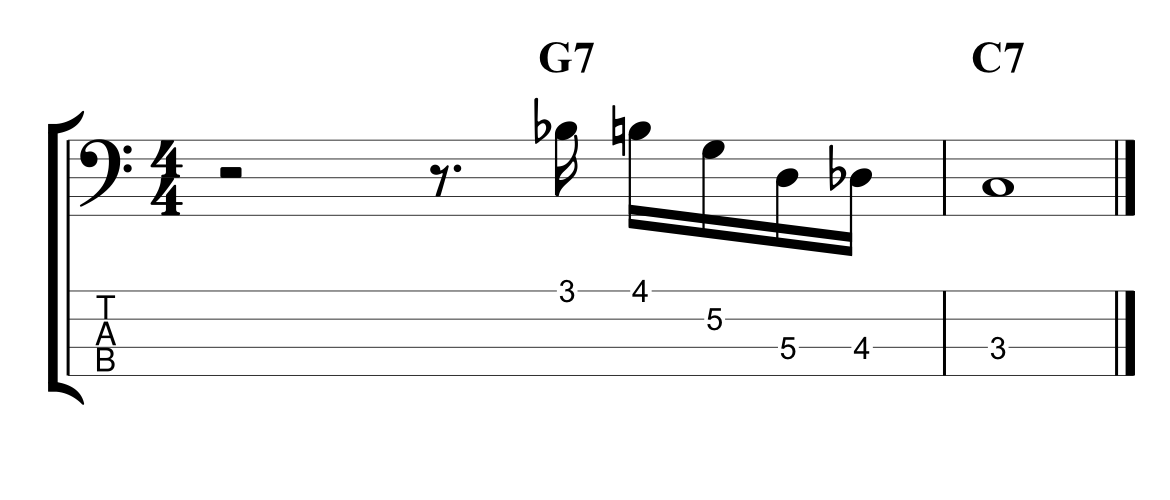Playing lines in 4th intervals is a very popular sound modern jazz. It’s a very distinctive sound. And once you’ve incorporated it into your playing, you’ll start to recognise when you hear other musicians using it. This video features an exercise that I’ve written to help you incorporate this sound in your playing.
If you’re not sure what I mean by an interval of a 4th then check out my video guide to playing intervals on the bass.
How to Play 4ths on Bass Guitar
There are two obvious ways to play 4ths on bass guitar. I believe that if you’re going to be able to come up with basslines in 4ths, then you need to practice and use both ways.
The first way is the easy way. You go from any fretted note to the same fret on an adjacent string. The bass is tuned in 4ths. So, as long as you stick to the same fret, you’ll be playing a 4th. This is very simple and you can apply this to playing scales and harmonies. Here is a G major scale played in intervals of a 4th.

This way of playing 4ths is so simple, that it can lead to some bass players ignoring the slightly more complicated way of playing 4ths. Which is by shifting position up five frets on a single string. Like this.

I think that this element of shifting position, is essential if you’re going to create musical lines in 4ths. If you only use the first, easier technique, then you’ll very quickly find that you’re stuck in one position on the bass neck. And as a result, it will massively limit your ability to come up with musical lines.
The 4ths Exercise
So I’ve written this exercise, which is designed to help you practice playing 4ths in both ways.

I’ve written it in the key of A major. But, if you want to master it, please practice it in any and every key. The concept is simple. It starts with a position shift from the A on the 5th fret of the E string to the D on the 10th fret. Then you play a 4th interval from the B on the 7th fret to the E on the 7th fret of the A string.
So it immediately uses both ways of playing 4ths. Then it repeats the same pattern all the way up the neck until you can’t go any further. And then you play everything the same way in reverse.
Once you’ve got used to playing lines in 4ths, start to listen to listen out for the sound of 4ths in other musicians lines. Listen to players like Evan Marien, he’s a brilliant bass player that loves the sound of 4ths in his basslines.







